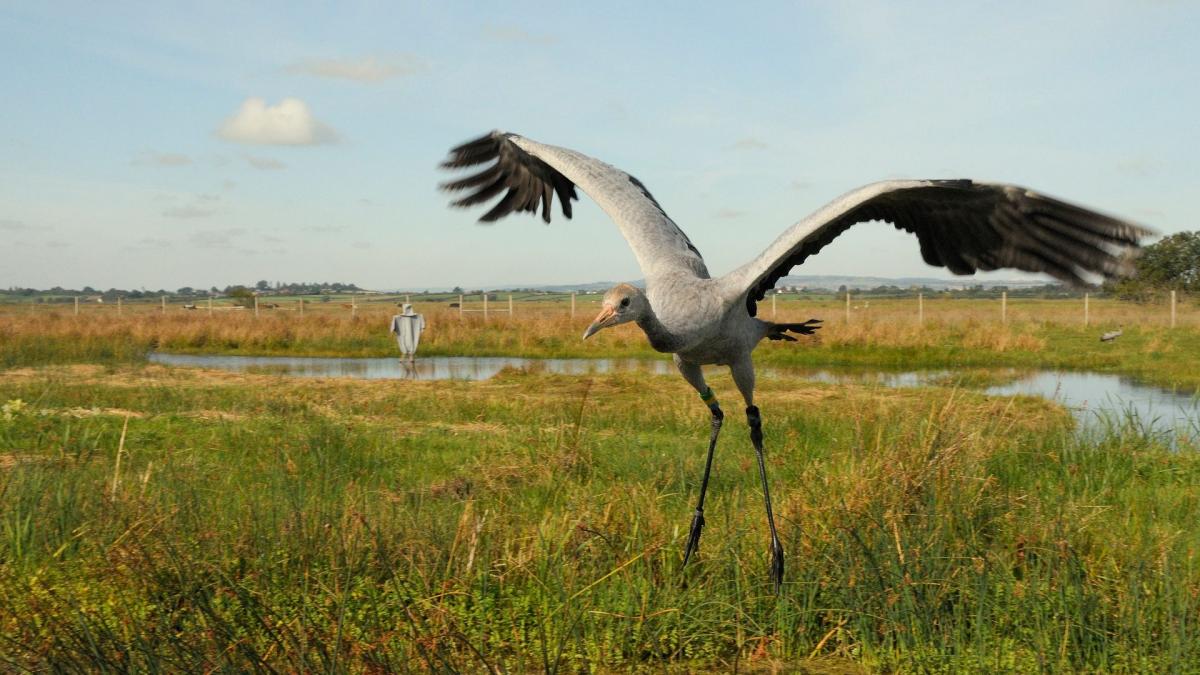A bird which had been extinct for centuries has reached record numbers.
There are now 72 breeding pairs of cranes across the UK.
Their population has now reached its highest level seen since the birds returned to East Anglia from Europe and began to breed in the 1970s.

Wild cranes were once widespread, before becoming extinct through hunting and the loss of their favoured wetland habitat 400 years earlier.
In 1979, a small number of wild birds colonised a part of the Norfolk Broads before spreading to other areas of eastern England and elsewhere in the UK.
The creation and improvement of their favoured habitat at RSPB Lakenheath and RSPB Nene Washes significantly aided this initial spread.
In 2010, the Great Crane Project – a partnership between the RSPB, WWT and the Pensthorpe Conservation Trust, and funded by Viridor Credits Environmental Company – gave the population a boost.

Hand-reared chicks were released on the Somerset Levels and Moors.
Standing at a height of 4ft, the UK’s tallest bird is also known for its graceful mating dance. When a pair comes together to start the breeding season, they reinforce their bond with an energetic dance of head bobbing, bows and pirouettes.
Damon Bridge, chair of the UK Crane Working Group, said: "The crane population is rapidly expanding. Although climate change poses a huge challenge for many species – opportunities to restore peatlands and floodplains to reduce carbon emissions and better manage increased flood risk can go hand in hand with the delivery of habitats perfect for cranes and other wetlands species."

Andew Stabury, a conservation scientist with the RSPB, said: "The recovery of the UK crane population, now at its highest level since the 17th century, showcases that conservation action can make a real difference.”
John Blackburn, Norfolk Wildlife Trust's reserve manager at Hickling Broad, said: "We are delighted with the news of this record number of breeding crane and proud that NWT reserves were instrumental in the crane’s early breeding success.
"The population is still growing in the Norfolk Broads, and NWT’s Hickling Broad reserve alone boasts a possible eight breeding pairs."
Chrissie Kelley, head of species management at Pensthorpe Conservation Trust, said: "As a flagship species for wetland conservation and restoration, the efforts to restore crane numbers will also have a lasting benefit for so many other species, which rely on this important habitat.”






Comments: Our rules
We want our comments to be a lively and valuable part of our community - a place where readers can debate and engage with the most important local issues. The ability to comment on our stories is a privilege, not a right, however, and that privilege may be withdrawn if it is abused or misused.
Please report any comments that break our rules.
Read the rules here